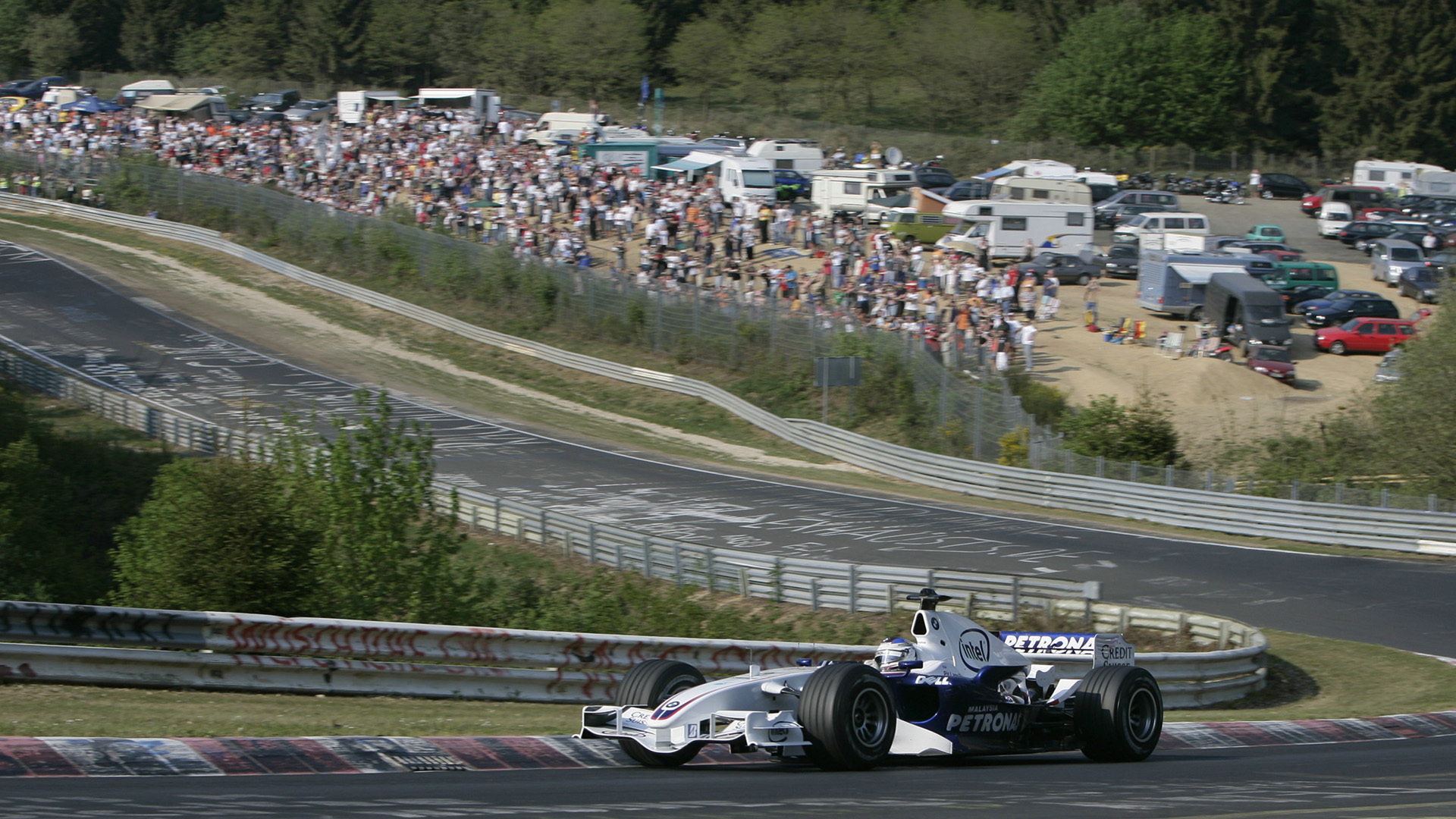

Drivers can’t resist the idea, but adapting a modern Formula One car for the Green Hell might end up putting it halfway on stilts—unless the whole track was resurfaced and sanitized beyond recognition. It’s not an issue of bravery holding the series back from a full return, it’s just bumps.
F1 has been racing at the Nürburgring this weekend. Well, not the real Nürburgring, the GP-Strecke that’s got a lot of the exciting features of the region like low-lying fog and damp Germans sitting in stands but can’t compare to the full Nordschleife, the longest racetrack in the world and one of the most dangerous.
The sport’s top drivers have been getting misty-eyed about the Green Hell lately. Sebastian Vettel said it would be “the ultimate challenge” to race it in F1, and Max Verstappen said that if Monaco is good enough for F1’s safety standards, why can’t they do the 13-mile Nordschleife? Even the Nürburgring’s owners said that F1 returning to the full track—which has not happened since the 1970s—would be “the dream.”
McLaren F1 Team Principal Andreas Seidl stood out as a voice of dissent, saying it would be “a dangerous adventure” that he wasn’t “sure if anyone is ready at the moment to try.” He would know, having been part of or in charge of the last two attempts by high-end racing cars on the circuit.
Seidl was an engine engineer for BMW F1 when Nick Heidfeld did the Nordschleife run in 2007, a promotional event not looking for lap time. Which was just as well, because they had to put the car virtually on stilts and limit its speed.
F1 cars ride incredibly close to the ground, pressed even lower every time they undergo downforce. Even at smooth, modern racing circuits you often see amazing plumes of sparks as the rear bottoms out. After the track evolved a single lump at turn 10 in Sochi this year (arguably, the most interesting feature of the circuit) it started lobbing the sensitive cars and claiming rear wings.

The Nordschleife has a lot more than one, relatively shallow, lump. Heidfeld was by no means driving flat-out when he did the three filming laps in 2007. BMW bosses pleaded with him to be careful, rather than aim for lap time, and with the car wobbling at a height of four cm above the tarmac on its front wing and eight cm at the rear, that was probably the only possible option.
Even so and as BMW bosses intended, the show run happening at a crowd-pleaser event. It’s pretty special to watch.

F1 last raced the actual Nordschleife 44 years ago and it hadn’t been without controversy before then. Drivers boycotted the race over safety concerns in 1970, and Niki Lauda attempted to encourage another boycott before the disastrously wet 1976 race. The race went ahead but Lauda sadly proved his own point when he sustained near-fatal burns in a brutal crash, ending F1’s tenure on the track.
GT cars still race the full Nordschleife layout, including the famous 24-hour event but drivers require an additional license (above the standard competition one) to prove they have enough experience to race safely there.